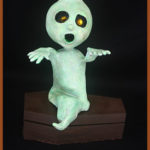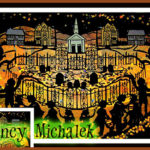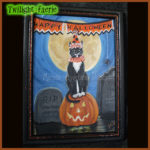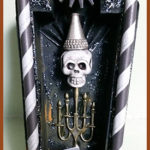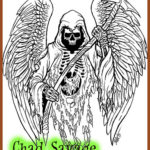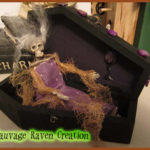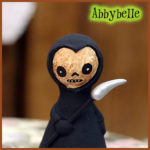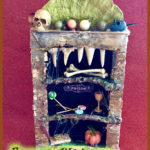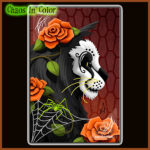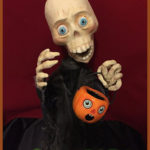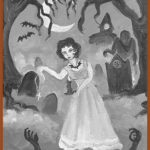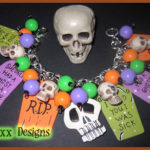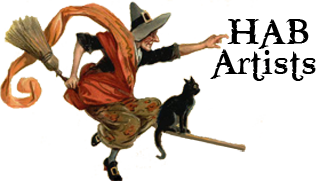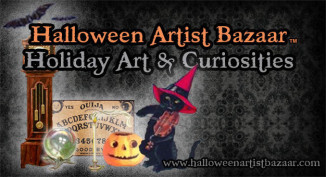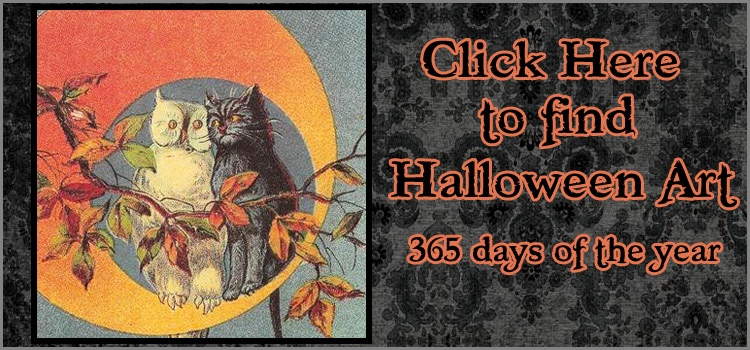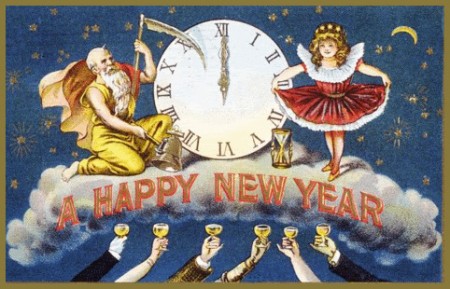
Father Time, Death and the New Year -By Angelique Duncan
The ringing of the New Year marks the arrival of Father Time to take away the old year. He is often depicted bearded, wearing a cloak, carrying a scythe and an hourglass. Sometimes accompanied by a crow, often Father Time’s companion is Baby New Year. In some renderings he is winged. His arrival marks an end of time and sometimes the death of an era.
It is believed that Father Time is the embodiment of the ancient Greek deity Chronos or Kronos. With many of the Greek deities, they carried over to the Roman mythologies. Chronos and the Roman deity Saturn were of similar nature. Both were Gods of Harvest and were depicted as carrying a scythe in which they would use to cut down crops. An overlapping mythology from the Greeks is that of Cronis, who castrated and killed his father Uranus by using a scythe. Some historians tell that the mythologies of Chronis and Cronis are of the same deity, some contend that the two are separate entities serving different mythological functions, much as Zeus and Saturn are similar in functions in their perspective cultures.
The word Saturn has the meaning to sow. Chronis holds a dual meaning of time and crow, hence where the crow companion who appears in illustrations of Father Time fits in. The scythe shape carried by the two deities is symbolic that time rises and falls and inevitably all things must end.
During the Renaissance era Father Time emerged as the keeper of time passage and our modern image of the deity was formed. He carries with him a scythe that cuts down time and timepiece either an hourglass or a clock face, symbolizing the constant flow of time forward.
It was once believed that we each have our own hourglass that is kept by Father Time. When our “time is up” and we have come to the end of our time on Earth, he comes to collect. During the renaissance era Father Time was also synonymous with the Reaper of Death. The imagery of the elderly male wearing a cloak with broad wings that collected souls at the end of their life was split to another entity of what is known today as the Grim Reaper, a skeletal man with a beard in a dark cloak with a scythe and hourglass in hand. The imagery of death developed his own persona and through out time no longer was depicted with the beard and hourglass, however the hooded cloak and scythe remain part of his repertoire.
Some cultures believe Father Time works alone, gathering the years as they expire. Others believe that Father Time and Baby New Year are the same entity. As the old year expires Father Time collects it and passes a New Year to the Baby to hold guardianship over and bring to maturity. As the year progresses so does the Baby to become the next incarnation of Father Time to hand off that year to a new Baby and the cycle continues. Some believe that the two work in concordance, but are individual entities independent of each other. The Father collects the old decayed era that has come to an end; the Baby brings the new fresh era.
The Baby New Year has his origin in Greek mythology of a baby that was ceremonially carried in a basket to symbolize the rebirth of the fertility God Dionysus. The custom of The Baby New Year was practiced by Germans and carried over to America through their migrations. The modern image of the Baby New Year now sports a top hat and a banner sash with the year he is custodian over tied across his chest. It was the Victorians, with their fascination of dressing children like adults, who are responsible for Baby New Years fashionable top hat.
Across cultures and spans of time a common theme of a Fatherly elderly bearded man appears at Winter. The Holly King is the Celtic God of the dying year. He rules from Summer Solstice through the Winter Solstice. The Holly King represents the darkness and decay of winter. Depicted often as a bearded man with a Holly crown. Some historians correlate the Holly King to Father Christmas. Father Christmas is depicted as a bearded man wearing a robe; in lieu of a scythe he carries a staff. Father Christmas was the precursor to the bearded St Nicholas and later Santa Claus. The Holly king is also thought to bear resemblance to Old Man Winter, the deity who reins over the winter months and brings cold, snow and the “death” of the sun until it’s season.
Each of these bearded fellows has their place in their cultures mythology and history. They may all be offspring in some fashion of the same mythology. They may serve to tell the story of Chronos or Saturn, defining end of eras and the sowing of time in the cross cultural belief that has stood the test of time. The image of Father Time holding his scythe and hourglass counting the minutes until it is time to collect the next expired year remains.
Farewell old year. A very happy young new year has arrived.
Angelique Duncan is proprietor of Twilight Faerie Nostalgic and Capricious Objects. Check out her artist page to find links to her shops and vintage inspired traditional holiday art. Visit again next month for more traditions and folklore.


